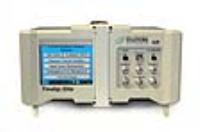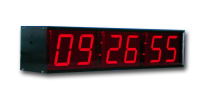TimeSpy
Portable Precision Time Measurement TimeSpy precisely measures the accuracy of a wide range of classic and network timing inputs against an internal precision GPS-controlled oscillator. TimeSpy also optionally accommodates a laboratory standard input to use as a time reference.Measures and displays the difference between input time signal and UTC Measures and displays the difference between input time signal and UTC Capable of measuring a wide variety of time signal inputs Timing resolution of better than 1 nanosecond Laboratory standard 1pps & 10MHz inputs can be used as time reference Absolute accuracy of up to 50 nanoseconds to UTC Automatic identification and analysis of Modulated Carrier Timecodes Full colour touch-screen with user-friendly Windows-based operating system USB port on front panel for easy access downloads for subsequent analysis of data Robust, portable design for all industrial applications User-selectable threshold for alarm generation Robust, portable design for all industrial applications Choice of clock accuracy: see selector table Applications TimeSpy is invaluable where time of day information is distributed from a central master clock to sub-master clocks or user systems over large distances via serial data links or packet networks. Substantial delays can occur due to high levels of network traffic or even due to the long distance between the master clock and the user. Some commercially available software algorithms can reduce these errors but, unless the errors are accurately and independently measured at the point of use, the user cannot be certain of the accuracy of his time source in this type of application. Additionally, the high accuracy of the TimeSpy means that it can also precisely measure the time error of free-running clocks and timing systems which are synchronised from untraceable sources, such as television and radio broadcasts, electrical power lines and via the internet. Ease of Use As the unit is portable and battery powered, it is simple to synchronise the unit to GPS outside by using the integral GPS antenna. Alternatively, synchronisation can take place inside if connected to an external GPS antenna, with further flexibility to use AC mains power.Visit the Time and Frequency Solutions Ltd website for more information on TimeSpy






